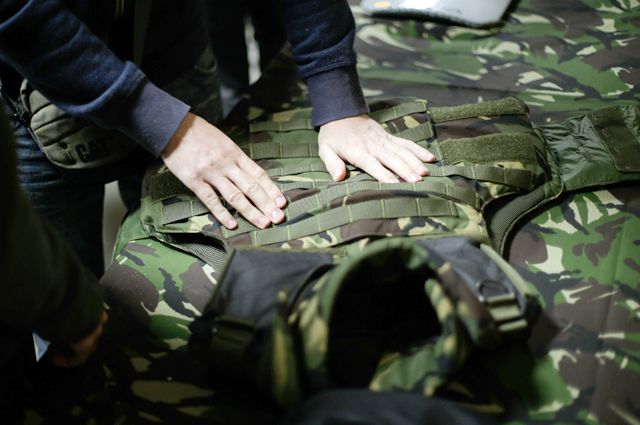
Russian developments of bulletproof vests using “liquid armor”are expected to be in service with the arrival of combat equipment in the army “Sotnik”. According to the available information, the formation of the technical task will end in 2021, and the equipment will be able to start entering the tests and the troops. АиФ.ги I analyzed the principle of operation the principle of operation and features of the use of this technology in bulletproof vests were analyzed.
Soft but firm
Earlier, the Rostec State Corporation promised that the equipment of the soldier of the future “Centurion” due to the technology of “liquid armor” will receive a record low weight and the ability to fit the anatomical features of the fighter. As a result, the protection will not restrict movement and will allow you to take the additional weight necessary to perform special missions.
At the same time, the equipment will have increased security in comparison with existing types of body armor. In the future, the Centurion will not only stop the fragment flying at a speed of up to 670 m/s, but also extinguish the shock pulse, which can cause serious damage to internal organs even without breaking through the protection.
What is liquid armor?
The basis of the so-called “liquid armor” is non-Newtonian liquids. The peculiarity of such liquids is their ability to acquire the properties of solid materials with a sharp impact on them. Since the barrier material undergoes high-speed shear deformation during impact, such a liquid can be used as a kind of ” liquidarmor», hardening under the impact & mdash;penetrating impact of knives, sharpeners or ballistic impact of bullets or shrapnel. Since it is very problematic to use the liquid as a structural material for building protective structures, it is impregnated with porous multilayer textile armor packages made of synthetic high-strength high-modulus materials such as Kevlar, tvaron.
Under normal conditions, the textile armor package impregnated with a suspension remains soft and flexible and does not restrict movement, and when a bullet or fragment hits, the liquid contained in it hardens and thereby enhances the protective ability of the textile armor package. Improving the characteristics of a bulletproof vest using such technology is possible only with the simultaneous use of both Kevlar and liquid bags.
How did it all start?
The beginning of work on “liquid armor” dates back to the mid-1990s, when in the USA at the Center for Composite Materials of the University of Delaware) under the guidance of Prof. Norman Wagner began research on the ballistic resistance of textile armor impregnated with a thickening (hardening) liquid during shear, which was briefly called STF. In 2000, these studies were conducted jointly with the Materials Research Laboratory of the US Army Research Laboratory, headed by Dr. EricWetzel. The aim of the research was to increase the ballistic resistance of textile armor based on nanotechnology advances. The first encouraging results were obtained in 2002. In the next two years, the increased resistance of textile armor impregnated with STF to the impact-penetrating effect of thin pointed strikers was established, and the technology for obtaining STF and methods for its introduction into a textile armor package were developed. The US patent for the new armor was obtained in May 2003.
Comparing successes
Comparing Russian developments and Western analogues, it should be remembered that most of both the characteristics of the armor and the results of its tests are kept secret. However, according to open sources, the United Kingdom, the United States and Poland have developments in this area. Regarding the UK, it is known that their prototype body armor has an equal degree of protection for personnel with less weight and greater flexibility. Russian developments, as well as experiments in the United States, have similar characteristics. Both technologies have been tested for both bullets and shrapnel, as well as for piercing weapons. According to the resultsexperiments that our, that American armor has a similar penetration limit (in terms of projectile velocity) for a single layer of Kevlar fabric impregnated with “liquid armor” about 220 m/s. At the same time, in the same experiments, both tissues showed excellent resistance against stabbing weapons. And from the above, we can conclude that in the near future, we should expect a significant strengthening of the US Army bulletproof vests against light firearms and stabbing weapons. According to experts, the strengthening of the protective properties of body armor of the British army to the appropriate level should be expected later than in our country and in the states.

